Are you ready to revolutionize your content writing process by harnessing the impressive capabilities of artificial intelligence? You’ve come to the right place. In this comprehensive guide, I’ll walk you through how to use ChatGPT, one of the most advanced AI content generator tools on the market, and various tips and tricks to get the best results for your writing projects. So let’s dive in and unlock the secret to a more efficient, powerful, and engaging content creation experience.
What is ChatGPT?
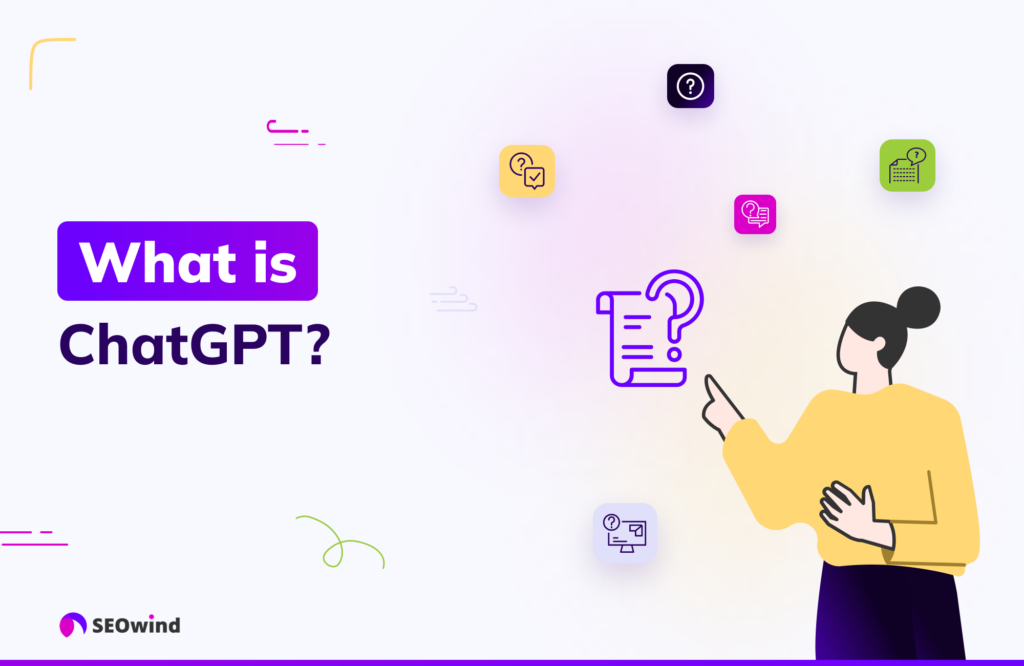
ChatGPT (short for Generative Pre-trained Transformer) is a large language model developed by OpenAI that uses natural language processing techniques to create human-like text based on user prompts. It has gained immense popularity due to its exceptional performance at understanding context and generating coherent responses, making it especially suitable for applications such as content writing.
This cutting-edge tool relies on deep learning algorithms trained on large datasets from diverse sources, resulting in rich knowledge about numerous subjects that can be leveraged for a wide array of purposes, including article or blog post creation, copywriting, brainstorming creative ideas, drafting social media posts, and so much more.
Several factors set the ChatGPT model apart from other AI generators:
- Its ability to understand complex instructions and maintain context across multi-turn conversations
- Adaptive behavior that fine-tunes its response style depending on user inputs
- A consistent track record of producing high-quality outputs with minimal errors
No wonder many writers are turning towards this innovative tool as an indispensable asset in their content production toolkit!
How to use ChatGPT

To make the most out of ChatGPT for content writing, it’s essential to become proficient in two key aspects: crafting effective prompts and handling multi-turn conversations. In this section, we’ll delve into both these elements and provide valuable tips on how to use ChatGPT effectively.
Becoming a Prompt Wizard
Crafting effective prompts is crucial for obtaining accurate and relevant responses from ChatGPT. Here are some steps you can follow to excel at creating prompts:
- Be specific: Ensure your prompt conveys your intention or question. This helps minimize ambiguity and leads to more focused answers from ChatGPT.
- Include context: Provide relevant information or background within the prompt, which allows the AI model to offer better-informed responses.
- Think iteratively: Don’t hesitate to modify your initial prompt if the first response isn’t satisfactory. Refining the phrasing might help generate the desired outcome.
- Experiment with different approaches: Rephrasing your prompt as a question or using alternative keywords may yield better results.
By mastering these techniques, you’re well on your way to leveraging ChatGPT efficiently in your content writing process.
Handling Multi-Turn Conversations
Engaging in multi-turn conversations with ChatGPT can significantly improve the overall output quality by guiding the AI through multiple interactions while working towards an accurate response or robust content piece. Here’s how you can manage multi-turn dialogues effectively:
- Break complex queries into smaller parts: Divide complicated questions into simpler subqueries that follow a logical order. This step-by-step approach makes it easier for ChatGPT to address each aspect before giving a comprehensive answer.
- Refer back to previous responses: When follow-up questions are needed, refer explicitly to prior answers provided by ChatGPT; doing so helps maintain cohesion between each response and ensures continuity in the conversation.
- Keep responses focused: In each interaction, prompt the AI to elaborate on a specific point or aspect of its previous response.
- Establish guidelines: If you have specific requirements for the information provided, clarify them during initial interactions. This approach enables ChatGPT to adhere more closely to your expectations while generating content.
By implementing these strategies, you can harness ChatGPT’s potential by encouraging seamless multi-turn conversations that lead to well-rounded outcomes for your content writing needs.
Connect ChatGPT with Your Google or Microsoft Account
One of the first steps to accessing ChatGPT is to connect your Google or Microsoft account. By integrating a trusted account, you enable seamless communication and improved user experience.
To do this, simply navigate to the ChatGPT website and select the option to log in using either your Google or Microsoft account. Follow the prompts to authorize free account access and grant permissions. Once completed, your account will be connected, allowing you to enjoy personalized and secure interactions with the AI language model.
A Step-by-Step Guide to Access ChatGPT
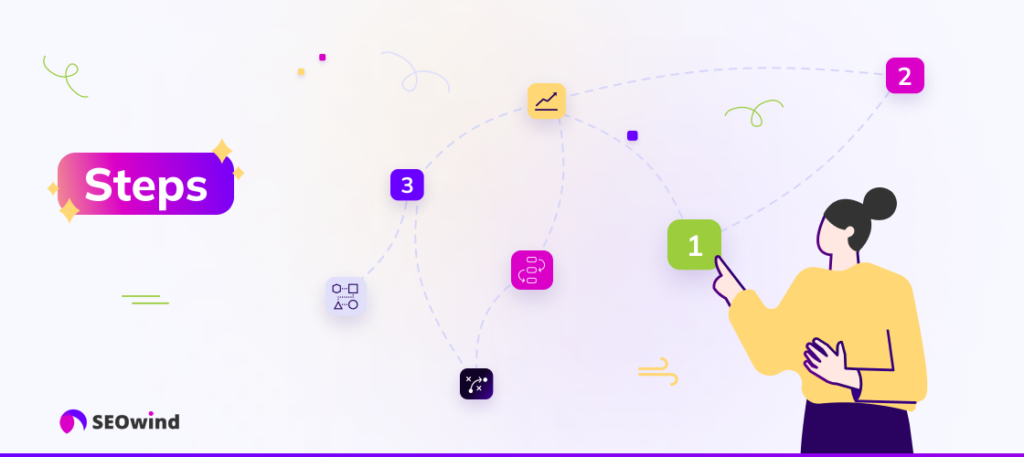
To access ChatGPT, follow these steps:
- Visit the ChatGPT website: Go to the designated Chat GPT login webpage provided by your chosen platform.
- Sign in with your preferred account: As discussed earlier, you’ll need to connect your Google or Microsoft account to access this AI-powered tool.
- Familiarize yourself with the interface: Once logged in, take a moment to explore the user interface, understand the available options, and adjust settings according to your preferences.
- Input your prompt: In the designated text box, type or paste the text you wish the AI language model to work with. Be specific and clear to achieve optimal results.
- Generate results: Hit the “Submit” or “Generate” button to let ChatGPT process your query and provide a suitable response or continuation.
- Fine-tune results: You may need to modify your input or adjust the model’s settings to achieve your desired output. Feel free to iterate and experiment with the prompts and settings to attain optimal performance.
Harness the Power of AI-Language Model for Content Writing – Common use cases
AI language models, such as ChatGPT, have revolutionized the way we interact with technology, as they can understand and generate human-like text based on input. These models can significantly improve tasks like writing content, answering questions, brainstorming ideas, or even having casual conversations.
When using ChatGPT, take advantage of its powerful AI capabilities by providing clear and concise prompts. Feel free to explore different applications – from drafting emails and articles to creating conversational agents, ChatGPT will assist you in a wide range of tasks, enhancing productivity and creativity.
ChatGPT offers numerous applications in content writing across various formats. Users can generate creative and engaging texts for different purposes by utilizing its advanced AI systems. In this section, we’ll explore some common uses of ChatGPT for writing various types of content.
Blog Posts and Articles
One of the primary applications of ChatGPT is crafting high-quality blog posts and articles. Deploying it as a tool to create outlines or generate drafts saves writers valuable time, enabling them to focus more on refining and delivering impactful messages.
Social Media Content
When capturing your audience’s attention with short and appealing copy is essential, ChatGPT acts as an invaluable assistant. You can optimize your social media presence through captivating captions, tweets, and LinkedIn updates that entice readers to engage with your content.
Ad Copywriting
Standing out amidst fierce competition requires persuasive ad copy that speaks directly to potential customers. With ChatGPT’s assistance, you can draft compelling advertising content for platforms such as Google Ads or Facebook Ads by leveraging the key components which appeal to consumers.
Email Campaigns
Effective email campaigns demand personalized messaging that captures recipients’ interests. ChatGPT’s natural language processing capabilities help tailor subject lines and blast content based on customer demographics or interests, ultimately contributing to higher open rates and engagement levels with minimal effort.
SEO-friendly Texts
A solid SEO strategy necessitates creating relevant web content containing targeted keywords without jeopardizing readability. Drawing on the power of AI-generated text allows you to incorporate basic search terms seamlessly into your writings while maintaining a strong narrative flow.
In short, learning how to use ChatGPT skillfully expands opportunities across numerous content areas: from informative articles tailored specifically towards unique target groups to engaging ads that strike just the right chord in potential buyers. Embracing this technology accelerates editorial processes without compromising quality – a veritable game-changer for modern content creators.
ChatGPT Tips and Tricks for Content Writing
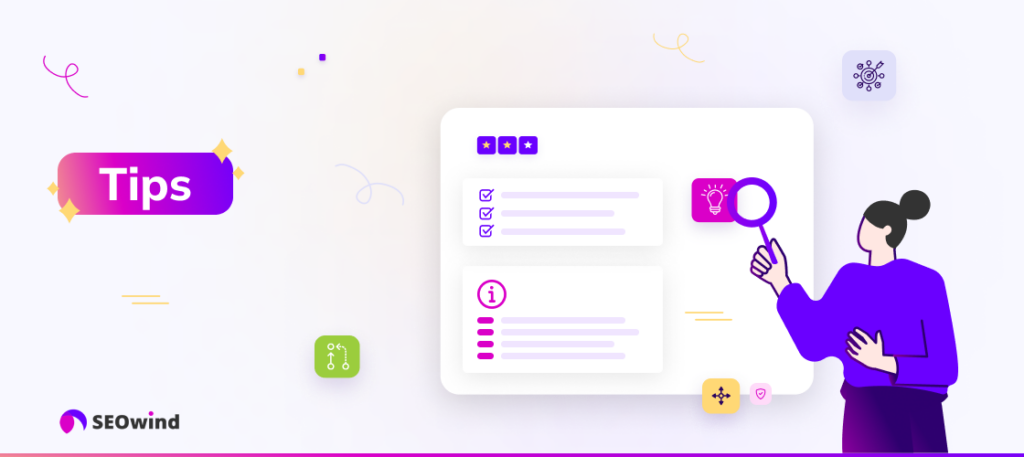
Leveraging the power of ChatGPT can significantly enhance your content-writing process. To help you make the best use of this advanced AI tool, here are some practical AI writing tips and tricks to keep in mind:
1. Understand Your Goals
Before you begin using ChatGPT, it’s essential to have a clear understanding of your content goals. Whether you want to create engaging blog posts or persuasive sales copy, recognizing the purpose will allow you to craft more focused prompts.
2. Craft Effective Prompts
Mastering prompt creation is essential to learning how to use ChatGPT effectively. Consider these points when crafting prompts:
- Keep them specific and unambiguous.
- Provide context or background information if necessary.
- Use natural language as if talking to a human.
- Experiment with Different Approaches
Experimenting with different phrasings and approaches when creating new conversation prompts can yield drastically different responses from ChatGPT. If you’re unsatisfied with the initial response, rephrase your question or provide additional context for better results.
3. Iterative Refinement
Once you receive a response from ChatGPT, provide feedback and send follow-up prompts asking for clarifications if something seems unclear or incomplete. This iterative refinement process will help generate more accurate and comprehensive content.
4. Leverage Temperature Settings
Temperature settings play an essential role while working with AI generators like ChatGPT. Lower temperatures (e.g., 0.2) produce more focused and deterministic outputs, whereas higher temperatures (e.g., 0.8) produce creative but potentially less coherent output.
Here are some options on how to manipulate temperature settings:
- For informational content: Use lower temperatures.
- For creative writing: Increase temperature for unique ideas and storytelling angles.
- Manage Response Lengths
Adjusting the AI’s max tokens parameter allows you to control response length. Use shorter responses when looking for quick insights and longer ones when seeking more detailed or elaborate content.
5. Proofread and Edit Outputs
While ChatGPT generates impressive outputs, it’s essential to proofread and edit the content before publishing. This ensures coherent syntax and relevance and helps maintain your voice throughout your work.
By following these tips and tricks in your writing process, you can unleash the full potential of ChatGPT, leading to higher-quality content with improved efficiency.
How to use ChatGPT for writing articles or blog posts
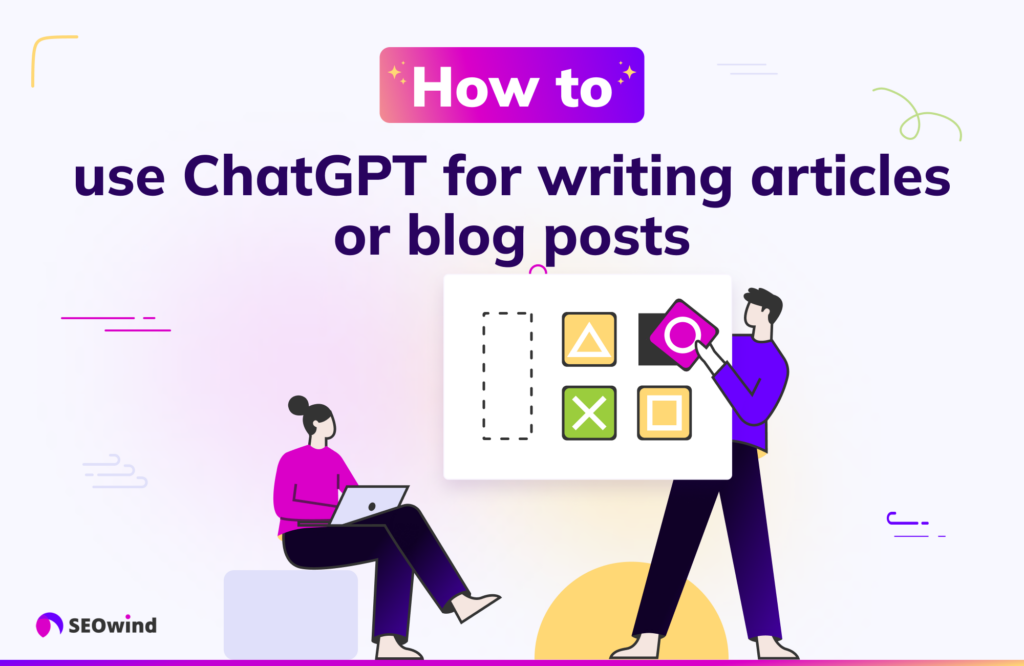
Creating high-quality articles and blog posts can be a time-consuming process. However, with tools like ChatGPT, you can significantly reduce the effort required and increase your productivity. This section will explore how to utilize ChatGPT best to write engaging content that captivates your target audience.
Preparing an Outline
Before diving into using ChatGPT, it’s essential to have a clear vision of what you want to accomplish. This starts with crafting an outline of your article or blog post. The outline should include the following:
- A compelling title that grabs the attention of readers
- Headings and subheadings that structure your content
- Key points under each heading that convey core ideas
Having a well-thought-out outline simplifies the writing process. It helps you communicate effectively with ChatGPT by providing clear instructions on what you expect from the AI.
Generating Content Using Prompts
Once your outline is ready, start generating content by creating specific prompts for each section.
For example: If your subheading is “ChatGPT Tips and Tricks,” instead of simply inputting “Give me tips on how to use a chatbot,” consider being more detailed: “Provide five essential tips and tricks for improving content generation with ChatGPT.”
Focusing on precise prompts improves the chances of receiving relevant output from the AI.
Refining Generated Content
When utilizing an AI tool like ChatGPT, it’s important not to rely solely on its output without reviewing it first. While most generated text may be coherent and helpful, some portions may need alterations or rephrasing.
To ensure quality:
- Check grammar and punctuation.
- Look for factual inaccuracies.
- Ensure proper transition between ideas.
- Make sure the content expertly answers user queries.
Refining and optimizing your content ensures readers have a fulfilling experience while accessing your web pages, blog or article.
Formatting for Readability
As you work with ChatGPT, remember the importance of formatting in enhancing your content’s readability. Techniques such as headers and subheaders, bullet points, ordered lists, bold text, and italics can help break up long blocks of content and make it more digestible for readers.
By implementing these strategies, you’ll find mastering how to use ChatGPT for writing articles and blog posts becomes an easily attainable goal!
ChatGPT Alternatives for Writing Long-Form Content
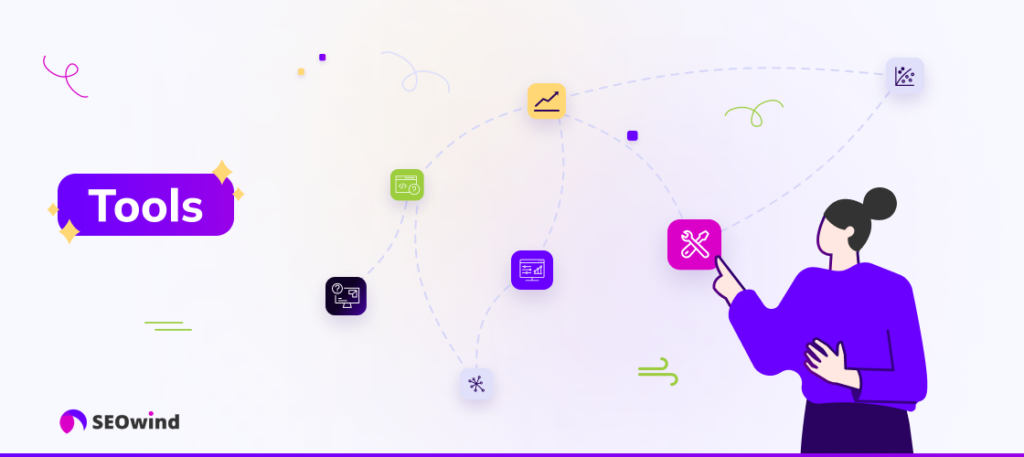
While ChatGPT is a popular and powerful tool, it is crucial to consider alternatives for creating long-form content. Different AI writing tools can provide distinct benefits and aid in achieving diverse content creation goals. In this section, we will discuss one such alternative, SEOwind.
SEOwind
SEOwind is an advanced AI-powered content assistant explicitly designed to produce search engine-optimized long-form articles and blog posts effectively. It comes with several unique features that differentiate it from ChatGPT:
- Keyword Focus: SEOwind pays special attention to incorporating relevant keywords throughout the content. This feature helps optimize your text to rank higher on search engines effortlessly.
- In-Depth Research: SEOwind can research specific topics more extensively than traditional AI tools like ChatGPT. SEOwind analyzes top-performing content and based on that asks AI to come up with an outline and then an AI article. As a result, the generated content will likely be more informative, and targeted towards your readers.
- Content Structuring: When writing long-form blog posts or articles, clear structure and organization are essential for readability and coherence. SEOwind can create logically organized outlines with headings and subheadings tailored to your topic’s requirements.
- Long-form Content Abilities: SEOwind is able to write even 5k words articles, avoiding the word limit imposed by ChatGPT.
Examining various alternatives like SEOwind, which emphasize different facets of writing, can empower you when delving into large-scale projects requiring comprehensive research or a nuanced understanding of Search Engine Optimization (SEO). So don’t limit yourself; explore multiple options before settling on the perfect AI tool to elevate your content writing pursuits.
Does ChatGPT Give Wrong Answers?

While ChatGPT is an incredibly powerful AI language model, it’s essential to remember that it isn’t infallible. Yes, ChatGPT can sometimes provide incorrect or misleading information for several reasons:
Training Data Limitations
ChatGPT is trained on diverse internet content, which inevitably contains false information and inaccuracies. Consequently, the AI may pick up and reproduce these inaccuracies when generating text.
Ambiguous Prompts
If you give ChatGPT an unclear or ambiguous prompt, it might not provide a precise answer. To obtain accurate results, ensure your prompts are clear and specific to minimize misunderstandings.
Complex Questions
Some questions require domain-specific knowledge or involve nuanced opinions outside ChatGPT’s scope. In such cases, the AI could generate incorrect answers due to its inability to comprehend highly specialized topics fully.
How to Minimize Errors
To reduce the chances of receiving wrong answers from ChatGPT app, consider implementing these strategies:
- Ensure your prompts are concise and specific.
- Break down complex questions into simpler parts.
- Verify AI-generated information against reliable sources before using it in any published material.
- Don’t hesitate to rephrase and retry if the initial response is inaccurate.
By acknowledging its limitations and taking measures to optimize your inputs, you can learn how to use AI chatbot effectively in various applications like content writing and research assistance while minimizing errors. However, thoroughly review the generated text and cross-check crucial facts with reputable sources before proceeding with your finalized content.
Is ChatGPT free to use?
ChatGPT is a powerful AI language model developed by OpenAI. Its primary function is to generate human-like text, making it an excellent tool for content writing. However, you might wonder if ChatGPT is free or comes with any associated costs.
ChatGPT Free Trial
OpenAI offers a free trial version of ChatGPT called “ChatGPT Free.” With this trial, users can experience the platform’s capabilities and experiment with its features before investing in a subscription plan. Accessing the free account can provide valuable insights into how ChatGPT works and allows you to determine if it’s suitable for your specific content writing requirements.
Premium Version – ChatGPT Plus Subscription
While the free version of ChatGPT offers limited usage, there is a premium subscription service called “ChatGPT Plus.” For $20 per month, users gain priority access to benefits such as:
- Faster response times: Experience quicker responses from the AI engine.
- Priority access: Get priority access to new features and improvements.
- Greater availability: Enjoy uninterrupted access when more users are online during peak times.
The subscription plan enables you to take full advantage of ChatGPT’s content generation capabilities and ensure consistently optimal performance.
Special Plans for Professionals
For business owners, enterprise customers, or professionals looking for expanded usage options beyond the standard plans, consider reaching out directly to OpenAI. They may offer customized solutions tailored to your needs and requirements at special pricing plans.
While using basic functionalities of ChatGPT are available through its free trial offering, you should consider upgrading to a paid plan to unlock advanced features and faster processing times. Depending on your level of engagement and reliance on AI-generated content tools like ChatGPT, investing in a subscription fee may hold significant value for streamlining your content creation process.
What are ChatGPT Plugins?
ChatGPT plugins are third-party extensions that enhance the functionality of the AI-based language model, explicitly catering to content writers who want to make their experience with ChatGPT more productive and efficient. These plugins can easily integrate with your preferred writing applications or platforms, such as Google Docs, Microsoft Word, or WordPress, providing you seamless access to ChatGPT from within the interface of your chosen tool. In this section, I will discuss how these plugins work and how they can improve your interaction with ChatGPT.
Functionality Enhancements
Using ChatGPT plugins offers several benefits for content creators who aim to optimize their writing process:
- Contextual assistance: The plugins can be designed to run in the background. At the same time, you write, offering context-aware suggestions that allow you to save time by instantly receiving advice suitable for your current paragraph.
- Formatting help: Some plugins may offer automatic formatting based on specific guidance given by the user or follow formatting rules relevant to a particular platform.
- Language improvements: Plugins can strengthen sentence structures, polish literary style, or refine vocabulary throughout writing by harnessing AI-generated suggestions.
- Content enrichment: Certain plugins might aid in finding reliable sources and references tailored around your topics.
Popular ChatGPT Plugin Examples
An increasing number of options are available in the market when choosing ChatGPT plugins. Here are a few famous examples:
- OpenAI Codex: Developed by OpenAI (the same organization behind GPT-3), this plugin generates ideas on multiple topics according to specific guidelines set up by users by adding human-like text into editors like Visual Studio Code.
- Innovation Engine: Aimed at marketers and product developers seeking inspiration through online research processes supported directly inside Google Docs.
How to Get Started with ChatGPT Plugins
To start using ChatGPT plugins, follow these simple steps:
- Conduct thorough research to find a suitable plugin that aligns with your requirements and workflow.
- Check the compatibility of the selected plugin with your preferred writing application or platform.
- Install the plugin according to the guidelines, which can mostly be found on official websites or help pages related to popular writing tools like Google Docs and Microsoft Word.
- Test out the features offered by your chosen ChatGPT plugin, ensuring it enhances your overall content-writing process.
Remember: For these plugins to work effectively, they require a stable internet connection and authorization to access your writing environment and OpenAI API key. Use reliable sources and trusted developers when selecting plugins for sensitive data applications.
ChatGPT plugins provide added functionality for those who wish to make their interactions with AI language models more efficient in creating professional, insightful content. By integrating these extensions into popular writing platforms, users can capitalize on all available benefits of using powerful language models like GPT-3 without compromising productivity.
Latest ChatGPT Controversies
As with any innovative technology, ChatGPT has faced its share of controversies. While the AI language model offers numerous benefits for content writing and other applications, concerns have been raised regarding potential misuse, ethical implications, and quality limitations.
Ethical Concerns and Misuse
AI models like ChatGPT can be powerful tools that enable users to perform tasks quickly. However, their capabilities also raise ethical questions about potential misuse. For instance:
- Generating misinformation: Users might leverage ChatGPT to create misleading or fake news articles that could spread misinformation.
- Manipulative marketing: Companies could utilize ChatGPT in their advertising copy to coerce or manipulate customers into purchasing products using deceptive tactics.
- Privacy invasion: AI-generated text could mimic a person’s communication style so accurately that it risks unauthorized access to personal information through phishing attempts or social engineering attacks.
These issues underscore the importance of developing responsible guidelines for AI usage and addressing these challenges before making the technology widely available.
Quality Limitations and Biases
An additional controversy surrounding ChatGPT is the occasional generation of offensive or biased content. Despite continuous improvements to reduce such occurrences, this remains a valid concern among users. Possible explanations for these shortcomings include:
- Training data: Since GPT models learn from vast amounts of internet text, they may inadvertently absorb biases within those sources. Developers must continually refine training processes to curtail biases as much as possible.
- Context understanding: Imperfect context comprehension can lead ChatGPT to produce irrelevant or offensive responses. Engineers must enhance context awareness while maintaining an aptitude for understanding natural language nuances.
To ensure fair representation and appropriateness within generated content, developers should prioritize efforts toward identifying harmful biases and refining AI training techniques accordingly.
Accountability Challenges
Finally, ensuring accountability amidst the growing reliance on AI systems like ChatGPT presents a significant challenge. When users depend on AI-generated text as a primary means of communication or content creation, the line between human and machine responsibility begins to blur.
- Credibility: Artificially generated content may question its credibility, mainly when the text reflects misinformation or biases. Users need to be aware of AI’s limitations and carefully treat information.
- Attribution: Assigning responsibility for offensive or harmful content can become ambiguous in cases where humans act alongside AI systems such as ChatGPT. Ensuring ethical practices hinges upon cultivating awareness around the obligations of both users and developers.
In light of these controversies, technological advances like ChatGPT must be accompanied by equal strides in ethical considerations, user education, and appropriate regulation for responsible use.
What’s the Future of ChatGPT and GPT-5?
As AI-powered language models evolve, it’s natural to wonder what lies ahead for ChatGPT and its successors, like the much-anticipated chat GPT-5. In this section, we will look closer at projections on where this technology is heading and how it might shape various industries, including content writing.
The Expansion of AI-Language Models
The advancement in AI-driven language models is undeniably moving rapidly. As newer iterations like GPT-4 and eventually GPT-5 are developed, they are expected to have an even greater understanding of context and emotional nuances and generate more accurate and faster responses. With these improvements, users can rely more on these tools for tasks such as:
- Content creation
- Customer support
- Social media management
- Virtual assistance
- Multilingual translation
Greater Integration with Existing Platforms
ChatGPT will likely integrate further with existing software platforms and tools as it becomes more sophisticated. This integration will streamline content creation and editing by offering real-time automated suggestions. Some examples include:
- Platform-specific plugins for blog maintenance (e.g., WordPress)
- Seamless functionality within popular text-editing suites (e.g., Google Docs or Microsoft Word)
- Providing businesses tailored insights based on gathered textual data
Enhanced Customization and Personalization Options
Increased customization capabilities in future versions of ChatGPT could allow users to better tailor output according to their specific needs or preferences. These options may extend beyond simple changes in tone or style but also allow for the following:
- Creating unique brand voices
- Adapting messaging according to target demographics
- Generating highly persuasive sales copy
Such advancements would make these AI-powered tools invaluable assets for marketing professionals and content creators.
Ethical Considerations
While exploring the potential future of ChatGPT and GPT-5, it’s vital to address the ethical implications of deploying increasingly powerful language models. As these AI engines grow more capable of mimicking human interactions, concerns may arise regarding the following:
- Misinformation spreading
- Plagiarism
- Privacy intrusion
Developers and policymakers must collaborate to ensure responsible usage of this technology as it evolves.
In conclusion, ChatGPT and its successors like GPT-5 hold immense promise to revolutionize content creation and other industries with advanced automation and contextual understanding capabilities. Key areas to watch for developments include integration with existing tools, enhanced customization options, and the ongoing challenge of addressing ethical concerns surrounding their use.
Other things to know about ChatGPT
As you explore how to use ChatGPT for content writing, it’s essential to remember additional information that will provide context and improve your understanding of this powerful AI tool. In this section, we’ll discuss the creation of ChatGPT, API availability, detectability, privacy concerns, and release timeline.
Who created ChatGPT?
ChatGPT was created by OpenAI, a cutting-edge research organization focused on developing artificial intelligence (AI) technologies. OpenAI has gained significant recognition globally for its work on various AI projects, emphasizing AI advancements such as natural language processing and deep learning techniques. They aim to create highly efficient AI tools and ensure ethical use and wide accessibility for individuals and businesses.
Is there a ChatGPT API?
Yes, OpenAI offers an API for accessing ChatGPT, which allows developers to integrate the AI model into their applications or services. By utilizing ChatGPT’s API, businesses can leverage this innovative technology’s capabilities according to their specific requirements—such as customizing real-time chatbots or automating large-scale content generation tasks.
Can ChatGPT be detected?
While ChatGPT-powered content can sometimes resemble human-generated output closely, it may still leave specific linguistic patterns or characteristics that make detection possible. A discerning eye could spot repetitions or inconsistencies due to unique aspects within the text produced by the AI model. Additionally, some researchers are actively developing models to distinguish between human-written content and text generated by GPT-style language models like ChatGPT.
Are ChatGPT chats private?
Privacy when using any AI service should always be a concern for users. In terms of OpenAI’s policies regarding data handling and privacy, they pay extra attention to ensure user data is protected. However, users must review the privacy policy of any third-party implementation of ChatGPT or any AI-supported chat service before using them. Remember that if a user participates in an online conversation with another party leveraging ChatGPT, both parties should be aware of and consent to use AI-based communication services.
When was ChatGPT released?
The new ChatGPT technology is built on OpenAI’s GPT-3 model, which was introduced in June 2020. Since its initial introduction, the advanced language model has been successfully implemented across various platforms for different use cases, including chatbots and content generation applications. Continued research and improvements have led to more refined iterations of the technology becoming available over time, enhancing its overall capabilities and expanding its real-world applications.
Can you write essays with ChatGPT?
Thanks to its advanced language processing capabilities, it is possible to write essays using ChatGPT. As an AI-powered tool, it understands context, interprets prompts, and generates high-quality content that aligns with the intended topic. To successfully compose essays using ChatGPT, follow these key steps:
Craft a detailed and precise prompt
Start by providing a concise yet comprehensive prompt to guide the AI toward your desired outcome. This may include specifying the essay type or format (e.g., argumentative or expository) and presenting relevant keywords related to the subject matter.
Break down your essay into smaller sections
Divide your essay into logical segments—such as the introduction, main body paragraphs (each focusing on a specific argument or point), and conclusion—to ensure coherence and clarity throughout the generated content.
Employ iterative refinement
As you work with ChatGPT, iteratively refine your prompts to achieve better results based on the output received thus far. If necessary, consider breaking complex ideas into more straightforward questions or directives.
Additionally, make use of the following best practices when crafting your essay using ChatGPT:
- Incorporate relevant supporting details: Help ChatGPT determine what examples, evidence, or facts should be included in a particular section.
- Request transitional phrases: Encourage seamless flow between sections by requesting transitions directly or leading the AI through suitable keywords.
- Avoid ambiguous wording: Unclear instructions can lead to unexpected content generation; specificity narrows possibilities for more predictable outcomes.
- Remain patient: It might take several iterations before you reach satisfactory results. Remember that finely honing your skills in directing ChatGPT will come with practice.
While leveraging ChatGPT can significantly streamline essay-writing efforts, always proofread and edit thoroughly after generating content—as some information might require fact-checking, rephrasing, or more substantial revision. Continued experimentation and patience are crucial to achieving desired results when utilizing ChatGPT for essay-writing purposes.
What is the ChatGPT Character Limit?
ChatGPT, a powerful AI language model developed by OpenAI, has proven to be an indispensable tool for content writers. One aspect of using ChatGPT effectively is understanding its character limit, which refers to the maximum number of characters generated in a single response.
ChatGPT operates with certain limitations on input and output character counts:
- Input Limit: The current version of ChatGPT accepts a maximum of 4096 tokens (a token can be as short as one character or as long as one word) per API call.
- Output Limit: The number of characters that ChatGPT generates in response is also constrained, with an adjustable limit typically ranging between 60-2000 characters depending on your settings and preferences.
To make the best use of ChatGPT and stay within these limits:
- Be Mindful of Token Limits: Ensure that the text you feed into the model is within the token limit; otherwise, you may face unexpected truncation or receive incomplete responses.
- Optimize Response Length: Depending on your requirements for content length, consider tweaking the settings to adjust how verbose or succinct the generated response will be.
- Manage Multi-Turn Conversations: For complex writing tasks or multi-turn dialogues, divide your interactions into smaller parts to avoid hitting character limitations.
By being mindful of ChatGPT’s character limits and optimizing its usage accordingly, you’ll find it much easier to handle content generation efficiently while maximizing valuable insights from this innovative AI tool.
Do You Need to Download ChatGPT?
One of the questions frequently asked by content writers interested in using artificial intelligence tools like ChatGPT is whether or not they need to download the tool. The good news is that you don’t need to download software to access and use ChatGPT effectively.
This section will discuss how you can utilize ChatGPT without downloading it.
Web-Based Access
ChatGPT is primarily a web-based platform, meaning you only need an internet connection and a browser to access the service. This allows for quick and easy setup and seamless updates on improvements without requiring users to download separate software packages.
To make the most out of your experience with ChatGPT, simply:
- Visit the official site or an approved third-party provider
- Create an account if needed, or log in with existing credentials
- Follow the instructions provided on the platform to utilize its features
Compatible With Multiple Devices
Since the service is available through a web browser, this also ensures compatibility across various devices such as desktop computers, laptops, smartphones (Android and iPhone), tablets, and other mobile gadgets. As long as you have an internet connection on your device, you can use ChatGPT from anywhere at any time.
Using ChatGPT without any downloads offers several benefits:
- Ease of access: No additional installation process is required.
- Cross-device compatibility: Use it on your preferred device.
- Regular updates: Get instant access to new features or improvements without needing complicated software upgrades.
- Lesser storage requirements: Saves valuable storage space on your devices since it does not occupy local disk space.
In conclusion, there’s no need to download anything, so getting started with ChatGPT for content writing becomes even more convenient and efficient!
Can you use ChatGPT on a mobile browser: iPhone or Android?
Many users need help with how to use ChatGPT on mobile devices, whether it’s for personal or professional purposes. The good news is that ChatGPT is a versatile tool designed for compatibility with various platforms, making it accessible via popular smartphone operating systems like iOS and Android. To get started with using ChatGPT on your iPhone or Android device, follow these simple steps:
- Access the OpenAI website: Since no dedicated app is available for ChatGPT, open a web browser on your smartphone and navigate to the OpenAI website.
- Sign up or log in: If you already have an account, enter your login credentials; if not, create an account to start using ChatGPT.
- Making your first request: Once logged in, access the area where you can input text prompts and generate AI-generated responses by typing out what kind of content or information you need.
Using ChatGPT on mobile devices may require a steady internet connection due to its cloud-based operation. Nonetheless, this also means users need not worry about storage space constraints or downloads interfering with their device performance.
When utilizing ChatGPT for content writing tasks on either iPhone or Android devices, consider these tips:
- Prioritize descriptive prompts: Frame your input clearly and concisely to generate more accurate results.
- Try different keywords: Experimenting with relevant keywords within your prompts can yield more ideas and diverse perspectives.
- Save drafts or generated content: Due to potential instability caused by browsing sessions on mobile devices, remember to periodically save progress made when editing long-form content directly within the browser interface.
In summary, although there isn’t a designated app for accessing ChatGPT from iPhones or Android phones, users can still benefit from its robust capabilities by visiting OpenAI’s website through any major web browser on their smartphone. With a few helpful guidelines in mind, you can seamlessly tap into ChatGPT’s content generation powers right from the palm of your hand.


